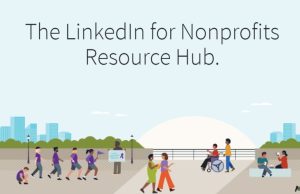Even as more nonprofits are offering retirement plans to their employees, participation rates remain relatively low. But at the same time, studies show nonprofit employees are worried about their retirement nest egg.
According to three-year trending data from The NonProfit Times and Bluewater Nonprofit Solutions’ annual Nonprofit Organizations Salary and Benefits Reports,
401(k)s and 403(b)s are the two most popular types of retirement plans that employers offer their employees.
While participation numbers are consistent, they are less than you might expect. Participation rates for 403(b)s during 2010, 2011 and 2012 were 58.15 percent, 66.59 percent, and 60.52 percent respectively. For 401(k)s the rates were 67.42 percent, 67.97 percent and 66.09 percent respectively.
While there was no data that explained how organizations enrolled their employees, the numbers suggest that many of them did not auto-enroll. Participation rates are between 60 and 90 percent when auto-enroll is used, according to benefits experts.
Julie Gallion, senior human resources consultant at Nonprofit HR Solutions in Washington, D.C., noted that most organizations choose 403(b)s instead of 401(k)s because they are specific to nonprofits. Prior to 2009, they did not have to be monitored or managed by their plan sponsors, and did not have any of the other regulations of 401(k)s.
The plans that were specifically asked about by The NonProfit Times for the purposes of the study were 401(k)s and 403(b)s. Over three years – 2010, 2011 and 2012 – the nonprofits that offered these types of plans and the number of employees participating remained relatively consistent. It is curious more don’t sign up. As Gallion explained, it’s not that they don’t want to do it. “They’re scared of it and it doesn’t affect them now,” said Gallion. “A lot of these employees are young so they aren’t even thinking of retirement now.”
People’s main priority these days “is to pay their bills,” said Christine Sivak, a partner at Cedar Book Financial Partners, LLC, in Cleveland, Ohio. “Retirement is way down on the list for most workers now.”
Gallion said that when she explained to her clients the money they would end up getting for the retirement if they enrolled immediately rather than waiting, it “shocked” them into action.
Sivak said in her studies, she found that only “9 percent of employees are financially literate. It’s hard to take it upon themselves to sign up for a plan,” she said. That’s why she believes most employers should consider auto-enrollment. When asked why she thought some still preferred to keep it in the hands of their employees, she chalked it up to a misreading of the situation.
“Sometimes there’s a misconception between what executives think employees want and what they actually want,” she said. “Some employers think auto-enrollment is taking too much control.” Sivak said that 70 percent of employees want to be auto-enrolled into retirement plans, citing data from the Employee Benefits Research Institute in Washington, D.C.
A study by advocacy organization Independent Sector in Washington, D.C., backs up the notion that there is great frustration among nonprofit employees about their retirement plans. According to its study, “Financial Security and Careers in the Nonprofit and Philanthropic Sector,” while many workers have access to some type of retirement plan, 45 percent of them are not satisfied with their ability to prepare financially to retire. Those in the late-stages of their career (age 50+) are more likely to feel some satisfaction (around 63 percent), while those in the early- and mid-stages (21-34 and 35-39) have the least amount of confidence (49 percent and 48 percent, respectively).
That same study indicated that workers are not sure how much they need to save for retirement. Most employees are saving some money, but only 18 percent are very or extremely confident that they are saving the right amount. On the other hand, 42 percent are not too or not at all confident about their savings. Much like satisfaction with retirement plans, late-stage career workers are slightly more confident about savings but even so, more than one-third (38 percent) are not confident.
Another key data point from The NonProfit Times’ research was related to organizational contributions to both 401(k)s and 403(b)s. The 401(k)s peaked at 7.72 percent in 2011, bottoming out at 7.38 percent in 2012. The number for 2010 was 7.53 percent. Contributions for 403(b)s reached a high of 8.35 percent in 2010, but fell to 6.73 percent in 2011. The rate recovered slightly in 2012 at 7.19 percent.
Gallion said that these numbers are consistent with what she has seen, but she noted that this was not always the case. In the years prior to 2011, contributions were as high as 10 percent. Gallion believes that the drop from that level could be attributed to delayed reaction to the Great Recession.
“Years ago, there was a huge contribution amount for employers, but they realized they needed to take that down a few percentages so they could save money but still remain competitive,” she explained.
Sivak also cited economic challenges when asked about the lower contribution rates. As charitable contributions to nonprofits decrease, organizations have to find ways to ensure they can continue to fulfill their mission. Sivak said retirement plans just happen to be one of the areas that are targeted first for cutbacks.
Other noteworthy statistics from NPT’s research include:
- 34.50 percent of organizations offered eligibility for 401(k) plans within the first year in 2012, up from 31.03 percent in 2010. The rates were higher for 403(b)s, with 43.08 percent of nonprofits offering inclusion within the first year in 2012, and 55.88 percent in 2010;
- Nonprofits with a budget of $0 to $499,999 were least likely to offer either 401(k)s or 401(b) during the three-year period. The highest level in any of those years for 401(k)s was 4.4 percent in 2012 and for 403(b)s, it was 12 percent in 2012.
- For larger nonprofits (a budget of $50 million or more), the offering rate for 401(k)s was the same in both 2012 and 2010 (28.57 percent), but dipped to 13.04 percent in 2011. The rate for 403(b)s was highest in 2010 (78.57 percent) and lowest in 2011 (42.86 percent).
As the years go on, Gallion doesn’t expect many extreme fluctuations from the data examined from the past few years. If something does happen, however, it will be due to organizations dropping 403(b)s because of regulations instituted in 2009.
“I am finding as more information is released and legal cases come about regarding 403(b) regulations, organization leaders are getting more information about what is legally required,” said Gallion. “A lot of nonprofit leaders are getting nervous about whether they are actually in compliance. New knowledge about compliance may result in nonprofits dropping their 403(b) plans and moving to another type of plan to save money.”
Meanwhile, Sivak is trying to do her part to make sure numbers do change for the better. “When you attend your place of worship everyone listens to the same message and is able to identify with it in some manner,” she said. “When you are discussing personal finances, because everyone’s situation is unique, that is not an effective solution.”
Sivak hopes that all of these efforts will lead to greater participation rates. Pointing out that the conversation is already shifting to “retirement readiness,” she said nonprofits are heading in the right direction. She also sees good signs coming from other sources.
“Some recordkeepers are changing their statements and websites to reflect the amount of retirement income the participant’s account balance may provide,” she said. “Hopefully this will help participants make the connection between the two and reinforce positive savings habits.” E












